DJI Dock 2
The DJI Dock 2 is an advanced autonomous drone docking station designed to enhance efficiency and reliability in drone operations. It supports seamless, automated takeoffs, landings, and recharging for DJI drones, making it an ideal solution for continuous, high-frequency missions across various industries. With its robust weatherproof design, rapid charging capabilities, and intelligent remote management features, the DJI Dock 2 ensures your drones are always mission-ready, even in challenging environments. Perfect for applications in industrial inspections, security, and agriculture, the DJI Dock 2 transforms the way you manage and deploy drone fleets.
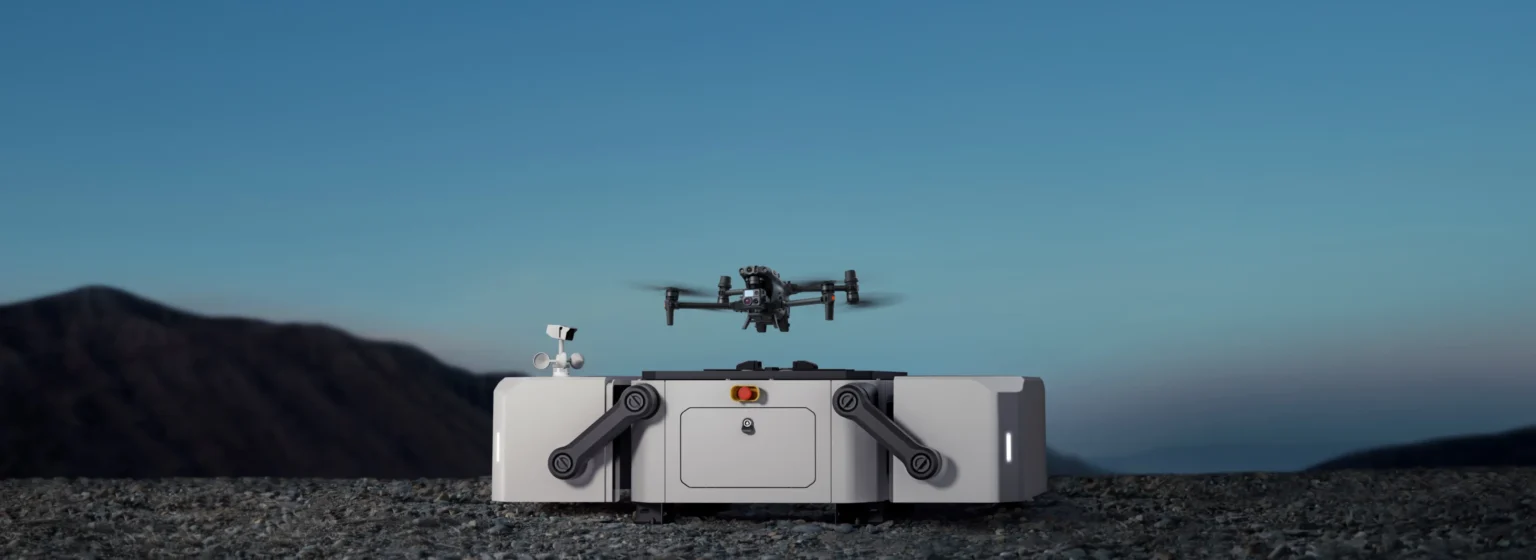
Autonomous Operations: The DJI Dock 2 enables fully automated drone missions, allowing drones to autonomously take off, land, and recharge without human intervention. This automation is ideal for routine inspections, surveillance, and monitoring tasks.
Rapid Charging: Equipped with advanced power management, the DJI Dock 2 offers fast charging capabilities, ensuring that your drones are quickly recharged and ready for the next mission. This feature is crucial for continuous and high-frequency operations.
Weatherproof Design: The DJI Dock 2 is built to withstand harsh environmental conditions with its robust, weatherproof construction. It features an IP55 rating, providing protection against dust and water, making it suitable for outdoor installations in diverse climates.
Intelligent Flight Management: The dock is integrated with intelligent flight management software, allowing for pre-programmed missions and automated flight paths. This feature streamlines operations and ensures precise, consistent data collection.
Remote Monitoring and Control: Operators can monitor and control the DJI Dock 2 and connected drones remotely through a user-friendly interface. This remote access capability is essential for applications like security and surveillance, where quick response times are required.
Data Security and Management: The DJI Dock 2 provides secure data transmission and storage, integrated with DJI’s cloud-based platforms. This ensures that mission data is safely managed and easily accessible for analysis and reporting.
Enhanced Safety Features: The dock includes advanced safety features such as obstacle detection and avoidance, ensuring that drones can operate safely even in complex environments. This reduces the risk of collisions and enhances overall operational safety.
High Compatibility: DJI Dock 2 is designed to be compatible with various DJI drone models, providing flexibility and scalability for different operational needs. This compatibility allows businesses to use a single docking solution across multiple drone platforms.
Energy Efficiency: The DJI Dock 2 is designed with energy-efficient components, reducing operational costs and minimizing environmental impact. The dock’s power-saving features help maintain long-term sustainability in continuous operations.
Easy Deployment and Integration: The DJI Dock 2 is designed for easy installation and integration into existing systems. Its modular design allows for quick setup and adaptation to different operational requirements, ensuring a smooth deployment process.
Specifications
Dock – General
Product Name
- DJI Dock 2
Total Weight
- 34 kg (without aircraft)
The actual product weight may vary due to differences in batch materials and external factors.
Dimensions
- Dock Cover Opened: 1228×583×412 mm (L×W×H)
Dock Cover Closed: 570×583×465 mm (L×W×H)
The above data does not include the height of the wind speed gauge (145 mm) but includes the height of the mounting base brackets (55 mm).
Input Voltage
- 100-240 V (AC), 50/60 Hz
Input Power
- Max 1000 W
Operating Temperature
- -25° to 45° C (-13° to 113° F)
When the ambient temperature is below -20° C (-4° F), the dock is in standby status, and the aircraft cannot perform flight tasks.
Ingress Protection Rating
- IP55
Number of Drones Accommodated
- 1
Max Allowable Landing Wind Speed
- 8 m/s
Max Operating Altitude
- 4000 m
Receiving Frequency of RTK Base Station Satellite
- Simultaneously receive:
GPS: L1 C/A, L2
BeiDou2: B1l, B2l, B3l
BeiDou3: B1l, B3l
GLONASS: L1, L2
Galileo: E1, E5B
Positioning Accuracy of RTK Base Station
- Horizontal: 1 cm + 1 ppm (RMS)
Vertical: 2 cm + 1 ppm (RMS)
Dock – Charging Performance
Output Voltage
- 28 V DC
Charging Time
- 32 minutes
The data was measured when charging the aircraft (when powered off) from 20% to 90% in a 25° C (77° F) environment.
Dock – Video Transmission
Video Transmission System
- O3 Enterprise
Operating Frequency
- 2.4000-2.4835 GHz
5.725-5.850 GHz
Antenna
- Built-in 4 antennas, 2T4R, supports intelligent switching
Transmitter Power (EIRP)
- 2.4 GHz: < 33 dBm (FCC); < 20 dBm (CE/SRRC/MIC)
5.8 GHz: < 33 dBm (FCC); < 14 dBm (CE); < 23 dBm (SRRC)
Dock – Air Conditioning System
Operating Voltage
- 28 V DC
Air Conditioning Type
- TEC Air Conditioning
Dock – Backup Battery
Battery Capacity
- 12 Ah
Output Voltage
- 12 V
Battery Type
- Lead-acid battery
Battery Life
- > 5 hours
Measured with a fully charged backup battery in a 25° C (77° F) environment. After a power outage, the dock does not support functions like aircraft charging, air conditioning, dock cover heating, and wind speed gauge heating. Always check malfunctions promptly.
Dock- Network Access
Ethernet Access
- 10/100/1000Mbps adaptive Ethernet port
Dock – Sensor
Wind Speed Sensor
- Supported
Rainfall Sensor
- Supported
Ambient Temperature Sensor
- Supported
Water Immersion Sensor
- Supported
In-Cabin Temperature Sensor
- Supported
In-Cabin Humidity Sensor
- Supported
Dock – Security Camera (External)
Resolution
- 1920×1080
Field of View (FOV)
- 151°
Auxiliary Light
- Auxiliary White Light
Dock – Security Camera (Internal)
Resolution
- 1920×1080
Field of View (FOV)
- 151°
Auxiliary Light
- Auxiliary White Light
Dock- Lightning Protection
AC Power Port
- 20 kA (rated value), meets EN 61643-11 Type 2 and IEC 61643-1 Class Ⅱ protection level requirements
Ethernet Port
- 10 kA (Itotal ),meets EN/IEC 61643-21 Category C protection level requirements
Dock – Supported Software
Applications
- DJI Pilot 2 (connects to DJI Dock 2 via DJI RC Pro Enterprise for deployment and commissioning)
Cloud Platform
- DJI FlightHub 2 (supported by default)
Third-party cloud platforms (accessed through DJI Cloud API)
Dock – Expansion Capability
Open Protocol
- DJI Cloud API
Edge Computing
- Supports data communication with external switches
Aircraft – General
Weight
- 1410 g
This value includes the weight of the battery, propellers, and a microSD card, but does not include third-party payloads. The actual product weight may vary due to differences in batch materials and external factors.
Max Takeoff Weight
- 1610 g
Dimensions
- 335×398×153 mm (L×W×H, without propellers)
Wheelbase
- Diagonal Wheelbase: 463.2 mm
Left-Right Wheelbase: 359.9 mm
Front-Rear Wheelbase: 291.4 mm
Max Ascent Speed
- 6 m/s (Normal Mode)
8 m/s (Sport Mode)
Max Descent Speed
- 6 m/s (Normal Mode)
6 m/s (Sport Mode)
Max Horizontal Speed (at sea level, no wind)
- Normal Mode, With Obstacle Sensing Enabled: 15 m/s flying forward, 12 m/s flying backward, 10 m/s flying sideways
Sport Mode: 21 m/s flying forward, 18 m/s flying backward, 16 m/s flying sideways
Max Wind Speed Resistance
- During Operation: 12 m/s
During Takeoff/Landing: 8 m/s
Max Takeoff Altitude
- 4000 m
Max Flight Time
- 50 minutes
Measured in a controlled test environment. Specific test conditions are as follows: flying forward at a constant speed of 46.8 kph in a windless laboratory environment at 20 meters above sea level, in photo mode (without photo-taking operation during flight), with Obstacle Avoidance Action set to Off, and from 100% battery level until 0%. Results may vary depending on the environment, actual use, and firmware version.
Max Hovering Time
- 40 minutes
Measured with the DJI Matrice 3D series drones hovering in a windless environment at 20 meters above sea level and from 100% battery level until 0%. Results may vary depending on the environment, actual use, and firmware version.
Max Operating Radius
- 10 km
Measured in an environment of approximately 25° C (77° F) with a safe battery level of 25%, ambient wind speed of approximately 4 m/s, round-trip flight speed of approximately 15 m/s, and hovering operation of 10 minutes. Results may vary depending on the environment, actual use, and firmware version.
Max Flight Distance
- 43 km
Measured with DJI Matrice 3D/3TD flying at a constant speed of 54 kph in a windless environment at 20 meters above sea level and from 100% battery level until 0%. Results may vary depending on the environment, actual use, and firmware version.
Max Pitch Angle
- 25° (Normal Mode)
25° (Sport Mode)
Max Angular Velocity
- 250°/s
Global Navigation Satellite System
- GPS + Galileo + BeiDou + GLONASS (GLONASS is supported only when the RTK module is enabled.)
Hovering Accuracy Range (windless or breezy)
- Vertical:
±0.1 m (with vision positioning)
±0.5 m (with GNSS positioning)
±0.1 m (with RTK positioning)
Horizontal:
±0.3 m (with vision positioning)
±0.5 m (with GNSS positioning)
±0.1 m (with RTK positioning)
Operating Temperature
- -20° to 45° C (-4° to 113° F)
Ingress Protection Rating
- IP54
Motor Model
- 2607
Propeller Model
- 1149, foldable, non-quick release
RTK Module
- Integrated on the aircraft
Beacon
- Integrated on the aircraft
Aircraft – Wide-Angle Camera
Image Sensor
- DJI Matrice 3D: 4/3 CMOS, Effective Pixels: 20 MP
DJI Matrice 3TD: 1/1.32-inch CMOS, Effective Pixels: 48 MP
Lens
- DJI Matrice 3D
FOV: 84°
Format Equivalent: 24 mm
Aperture: f/2.8-f/11
Focus: 1 m to ∞
DJI Matrice 3TD
FOV: 82°
Format Equivalent: 24 mm
Aperture: f/1.7
Focus: 1 m to ∞
Lens Defogging
- DJI Matrice 3D: The wide-angle camera supports lens defogging.
DJI Matrice 3TD: The wide-angle camera supports lens defogging.
ISO Range
- DJI Matrice 3D: 100-6400
DJI Matrice 3TD: 100-25600
Shutter Speed
- DJI Matrice 3D
Electronic Shutter: 8-1/8000 s
Mechanical Shutter: 8-1/2000 s
DJI Matrice 3TD
Electronic Shutter: 8-1/8000 s
Max Image Size
- DJI Matrice 3D: 5280×3956
DJI Matrice 3TD: 8064×6048
Still Photography Modes
- DJI Matrice 3D
Single: 20 MP
Timed: 20 MP, 0.7/1/2/3/5/7/10/15/20/30/60 s
Smart Low-Light: 20 MP
Panorama: 20 MP (raw image); 100 MP (stitched image)
DJI Matrice 3TD
Single: 12 MP, 48 MP
Timed: 12 MP, 48 MP, 0.7/1/2/3/5/7/10/15/20/30/60 s*
Smart Low-Light: 12 MP
Panorama: 12 MP (raw image); 100 MP (stitched image)
* The 0.7s and 1s intervals are not supported when taking 48MP timed photos.
Video Resolution
- H.264
4K: 3840×2160@30fps
FHD: 1920×1080@30fps
Video Bitrate
- DJI Matrice 3D
4K: 130 Mbps
FHD: 70 Mbps
DJI Matrice 3TD
4K: 85 Mbps
FHD: 30 Mbps
Supported File System
- exFAT
Photo Format
- JPEG
Video Format
- MP4 (MPEG-4 AVC/H.264)
Aircraft – Tele Camera
Image Sensor
- 1/2-inch CMOS, Effective Pixels: 12 MP
Lens
- FOV: 15°
Format Equivalent: 162 mm
Aperture: f/4.4
Focus: 3 m to ∞
Lens Defogging
- DJI Matrice 3D: The tele camera supports lens defogging.
DJI Matrice 3TD: The tele camera supports lens defogging.
ISO Range
- DJI Matrice 3D: 100-6400
DJI Matrice 3TD: 100-25600
Shutter Speed
- Electronic Shutter: 8-1/8000 s
Max Image Size
- 4000×3000
Photo Format
- JPEG
Video Format
- MP4 (MPEG-4 AVC/H.264)
Still Photography Modes
- DJI Matrice 3D
Single: 12 MP
Timed: 12 MP, 0.7/1/2/3/5/7/10/15/20/30/60 s
Smart Low-Light: 12 MP
DJI Matrice 3TD
Single: 12 MP
Timed: 12 MP, 0.7/1/2/3/5/7/10/15/20/30/60 s
Smart Low-Light: 12 MP
Video Resolution
- H.264
4K: 3840×2160@30fps
FHD: 1920×1080@30fps
Video Bitrate
- DJI Matrice 3D
4K: 130 Mbps
FHD: 70 Mbps
DJI Matrice 3TD
4K: 85 Mbps
FHD: 30 Mbps
Digital Zoom
- 8x (56x hybrid zoom)
Aircraft – Infrared Camera (DJI Matrice 3TD)
Thermal Imager
- Uncooled VOx Microbolometer
Pixel Pitch
- 12 μm
Frame Rate
- 30 Hz
Lens
- FOV: 61°
Format Equivalent: 40 mm
Aperture: f/1.0
Focus: 5 m to ∞
Do not expose the infrared camera lens to strong sources of energy, such as the sun, lava, or a laser beam. Otherwise, the camera sensor may be burned, leading to permanent damage.
Sensitivity
- ≤ 50 mK@F1.0
Temperature Measurement Method
- Spot Measurement, Area Measurement
Temperature Measurement Range
- -20° to 150° C (-4° to 302° F, High Gain Mode)
0° to 500° C (32° to 932° F, Low Gain Mode)
Palette
- White Hot/Black Hot/Tint/Iron Red/Hot Iron/Arctic/Medical/Fulgurite/Rainbow 1/Rainbow 2
Photo Format
- JPEG (8-bit)
R-JPEG (16-bit)
Video Resolution
- Normal Mode: 640×512@30fps
UHR Infrared Image Mode: 1280×1024@30fps (With the UHR Infrared Image function enabled, the aircraft can automatically enable or disable UHR Infrared Image mode according to the ambient light brightness.)
Video Bitrate
- 6 Mbps
Video Format
- MP4 (MPEG-4 AVC/H.264)
Still Photography Modes
- Single
Normal Mode: 640×512
UHR Infrared Image Mode: 1280×1024
Timed
Normal Mode: 640×512, 0.7/1/2/3/5/7/10/15/20/30/60 s
UHR Infrared Image Mode: 1280×1024, 0.7/1/2/3/5/7/10/15/20/30/60 s
Digital Zoom
- 28x
Infrared Wavelength
- 8-14 μm
Infrared Temperature Measurement Accuracy
- ±2° C or ±2% (using the larger value)
Aircraft – Gimbal
Stabilization
- 3-axis mechanical gimbal (tilt, roll, pan)
Mechanical Range
- Tilt: -135° to +45°
Roll: -45° to +45°
Pan: -27° to +27°
Controllable Range
- Tilt: -90° to +35°
Pan: Not controllable
Max Control Speed (tilt)
- 100°/s
Angular Vibration Range
- ±0.005°
Aircraft – Sensing
Sensing Type
- The aircraft supports six-directional obstacle sensing.
The aircraft has a 10° blind spot in the upper rear area. Always fly with caution.
Forward
- Measurement Range: 0.5-21 m
Detection Range: 0.5-200 m
Effective Sensing Speed: Flight Speed ≤ 15 m/s
FOV: Horizontal 90°, Vertical 90°
Backward
- Measurement Range: 0.5-23 m
Effective Sensing Speed: Flight Speed ≤ 12 m/s
FOV: Horizontal 90°, Vertical 90°
Lateral
- Measurement Range: 0.5-15 m
Effective Sensing Speed: Flight Speed ≤ 10 m/s
FOV: Horizontal 104°, Vertical 90°
Upward
- Measurement Range: 0.5-21 m
Effective Sensing Speed: Flight Speed ≤ 6 m/s
FOV: Front and Back 90°, Left and Right 90°
Downward
- Measurement Range: 0.5-14 m
Effective Sensing Speed: Flight Speed ≤ 6 m/s
FOV: Front and Back 95°, Left and Right 110°
Operating Environment
- Forward, Backward, Left, Right, and Upward: Surfaces with discernible patterns and adequate lighting (lux > 15)
Downward: Diffuse reflective surface with diffuse reflectivity > 20% (e.g. walls, trees, people) and adequate lighting (lux > 15)
Aircraft – Video Transmission
Video Transmission System
- DJI O3 Enterprise Transmission
Live View Quality
- 720p/30fps, 1080p/30fps (with DJI RC Pro Enterprise)
540p/30fps, 720p/30fps, 1080p/30fps (with DJI FlightHub 2)
Operating Frequency
- 2.4000-2.4835 GHz
5.150-5.250 GHz (CE: 5.170-5.250 GHz)
5.725-5.850 GHz
In some countries and regions, the 5.1GHz and 5.8GHz frequency bands are prohibited, or the 5.1GHz frequency band is only allowed for indoor use. Please refer to local laws and regulations for more information.
Max Transmission Distance (unobstructed, free of interference)
- DJI Matrice 3D
FCC: 15 km
CE: 8 km
SRRC: 8 km
MIC: 8 km
DJI Matrice 3TD
FCC: 15 km
CE: 8 km
SRRC: 8 km
MIC: 8 km
Measured in an unobstructed outdoor environment free of interference. The above data shows the farthest communication range for one-way, non-return flights under each standard. Always pay attention to RTH reminders in DJI FlightHub 2 during your flight.
Max Transmission Distance (unobstructed, with interference)
- Strong Interference (dense buildings, residential areas, etc.): 1.5-3 km (FCC/CE/SRRC/MIC)
Medium Interference (suburban areas, city parks, etc.): 3-9 km (FCC), 3-6 km (CE/SRRC/MIC)
Low Interference (open spaces, remote areas, etc.): 9-15 km (FCC), 6-8 km (CE/SRRC/MIC)
Measured with the aircraft flying (without third-party payloads) in unobstructed environments with typical interference. The above data shows the farthest communication range for one-way, non-return flights under each standard. Always pay attention to RTH reminders in DJI FlightHub 2 during your flight.
Max Download Speed
- 5 MB/s (with DJI Dock 2)
15 MB/s (with DJI RC Pro Enterprise)
Measured in a laboratory environment with little interference in countries/regions that support both 2.4 GHz and 5.8 GHz. Download speeds may vary depending on the actual conditions.
Lowest Latency
- The video transmission latency from the aircraft to the dock is approximately 110 to 150 milliseconds (affected by the actual environmental conditions).
The video transmission latency from the dock to DJI FlightHub 2 is affected by the actual network conditions and the computer’s configuration.
Antenna
- 4 antennas, 2T4R
Transmitter Power (EIRP)
- 2.4 GHz: < 33 dBm (FCC), < 20 dBm (CE/SRRC/MIC)
5.1 GHz: < 23 dBm (CE)
5.8 GHz: < 33 dBm (FCC/SRRC), < 14 dBm (CE)
Aircraft – Storage
Supported Memory Cards
- Aircraft:
U3/Class10/V30 or above is supported. A list of recommended microSD cards can be found below.
Recommended microSD Cards
- Aircraft:
SanDisk Extreme 32GB V30 A1 microSDHC
SanDisk Extreme PRO 32GB V30 A1 microSDHC
SanDisk Extreme 512GB V30 A2 microSDXC
Lexar 1066x 64GB V30 A2 microSDXC
Kingston Canvas Go! Plus 64GB V30 A2 microSDXC
Kingston Canvas React Plus 64GB V90 A1 microSDXC
Kingston Canvas Go! Plus 128GB V30 A2 microSDXC
Kingston Canvas React Plus 128GB V90 A1 microSDXC
Kingston Canvas React Plus 256GB V90 A2 microSDXC
Samsung PRO Plus 256GB V30 A2 microSDXC
Aircraft – Battery
Capacity
- 7811 mAh
Voltage
- 14.76 V
Max Charging Voltage
- 17.0 V
Type
- Li-ion 4S
Chemical System
- LiNiMnCoO2
Energy
- 115.2 Wh
Weight
- 544 g
Cycle Count
- 400
Charging Temperature
- 5° to 45° C (41° to 113° F)
Aircraft – Power Adapter
Input
- 100-240 V (AC), 50/60 Hz, 2.5 A
Output Power
- 100 W
Output
- Max output power of 100 W (total)
When both ports are used, the power adapter will dynamically allocate the output power of the two ports according to the load power, and the maximum output power of one of the ports is 82 W.
Aircraft – Charging Base
Input
- USB-C: 5-20 V, 5.0 A
Output
- Battery Port: 12-17 V, 8.0 A
Rated Power
- 100 W
Charging Type
- One battery charged at a time
Charging Temperature
- 5° to 40° C (41° to 104° F)
Q: What is the DJI Dock 2 and what does it do?
- A: The DJI Dock 2 is an autonomous drone docking station that facilitates automated takeoffs, landings, and recharging for compatible DJI drones. It enables continuous and high-frequency drone operations without the need for manual intervention.
Q: Which DJI drone models are compatible with the DJI Dock 2?
- A: The DJI Dock 2 is designed to be compatible with various DJI drone models. For specific compatibility details, it’s recommended to consult the product specifications or contact DJI support.
Q: How fast can the DJI Dock 2 charge drones?
- A: The DJI Dock 2 features rapid charging capabilities, significantly reducing downtime between missions. While exact charging times may vary based on the drone model, the dock ensures that drones are quickly recharged and ready for deployment.
Q: Is the DJI Dock 2 suitable for outdoor use in harsh weather conditions?
- A: Yes, the DJI Dock 2 boasts a weatherproof design with an IP55 rating, offering protection against dust and water. This makes it suitable for outdoor installations across various environmental conditions.
Q: Can I control and monitor the DJI Dock 2 remotely?
- A: Absolutely. The DJI Dock 2 allows for remote monitoring and control through a user-friendly interface. This feature is essential for applications requiring quick response times, such as security and surveillance.
Q: How does the DJI Dock 2 ensure data security?
- A: The DJI Dock 2 integrates with DJI’s secure cloud-based platforms for data transmission and storage. This ensures that all mission data is encrypted and safely managed, adhering to industry-standard security protocols.
Q: What safety features are incorporated in the DJI Dock 2?
- A: The dock includes advanced safety features like obstacle detection and avoidance systems. These features help prevent collisions and ensure safe operations even in complex environments.
Q: Is the DJI Dock 2 energy-efficient?
- A: Yes, the DJI Dock 2 is designed with energy efficiency in mind. Its components and power management systems aim to reduce operational costs and minimize environmental impact during continuous operations.
Q: How easy is it to install and integrate the DJI Dock 2 into existing systems?
- A: The DJI Dock 2 features a modular design that allows for straightforward installation and seamless integration into existing operational frameworks. This ensures a smooth and efficient deployment process.
Q: Where can I purchase the DJI Dock 2 and obtain after-sales support?
- A: The DJI Dock 2 can be purchased from authorized DJI dealers like Hobitech.in. Purchasing from authorized dealers ensures you receive genuine products along with comprehensive after-sales support, including technical assistance, repairs, and maintenance services.

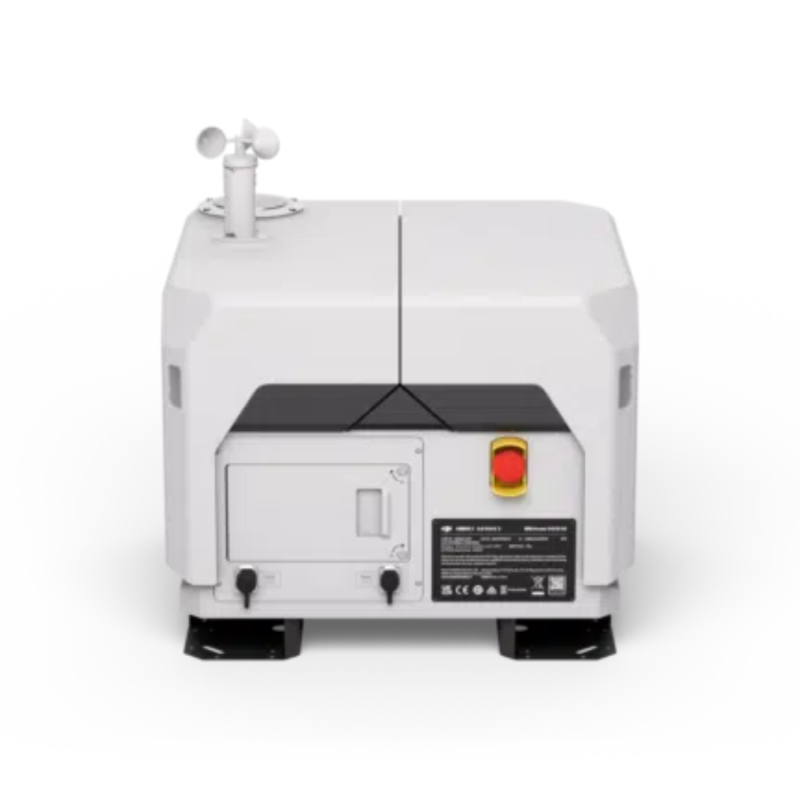

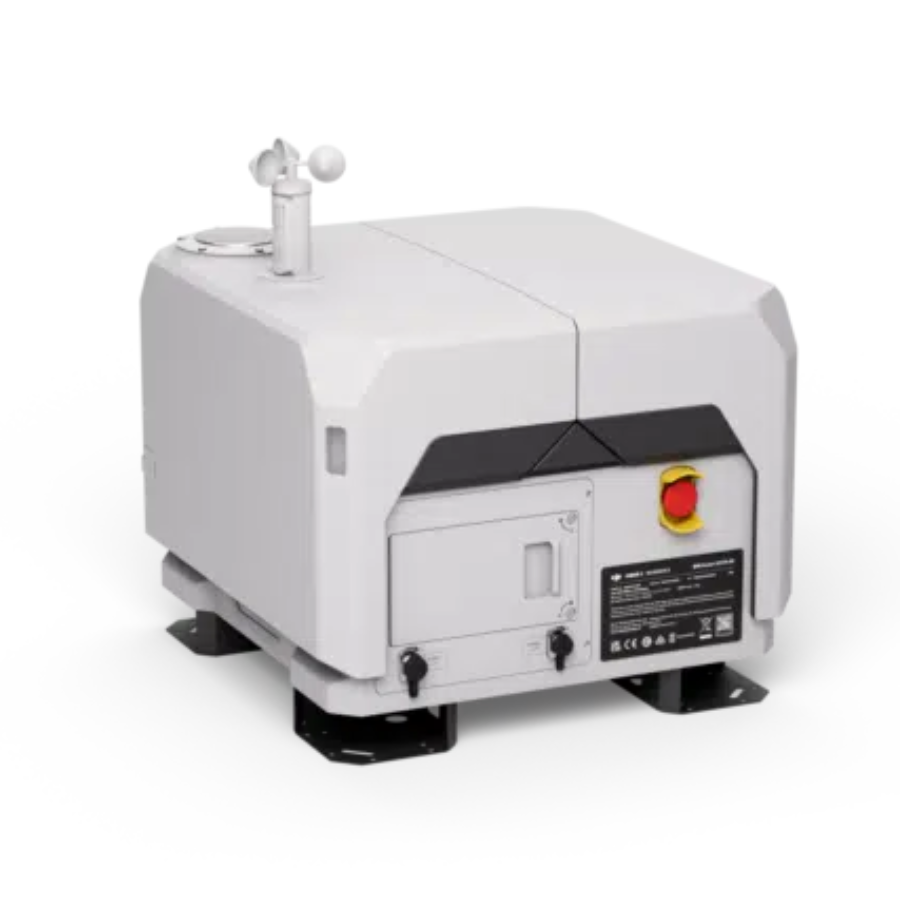


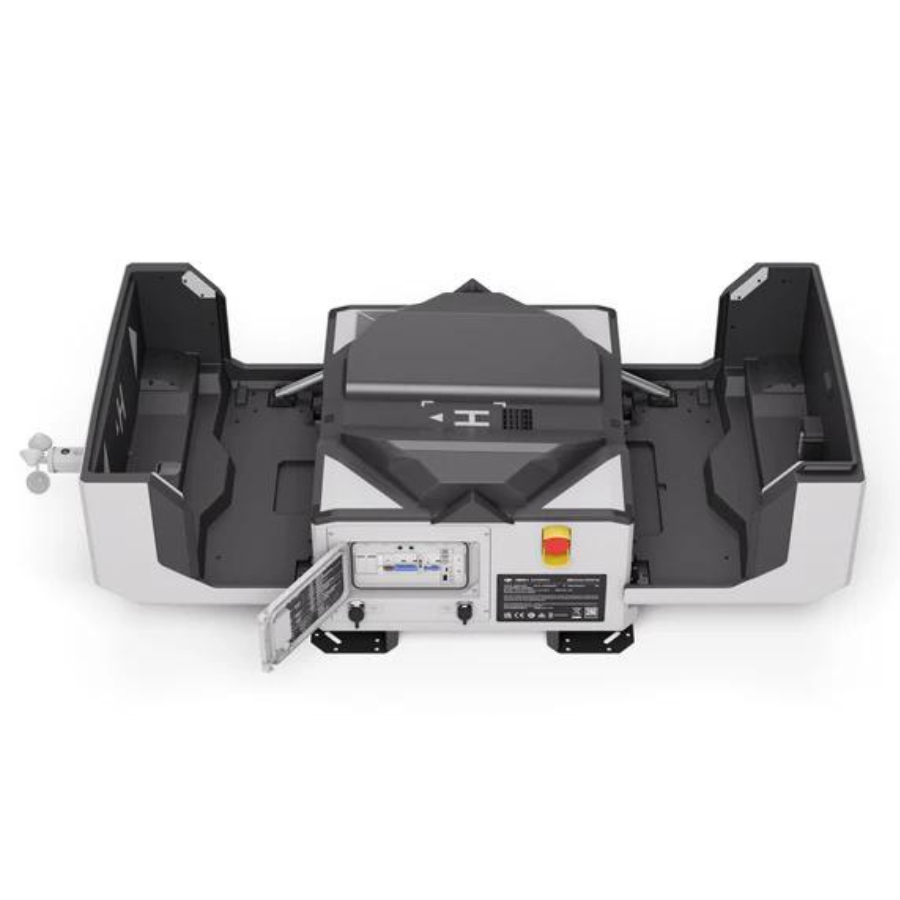
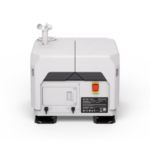
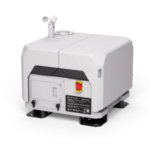
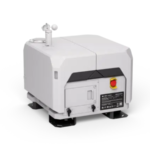
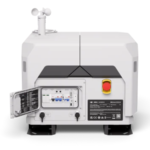
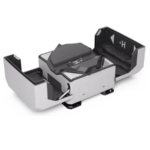
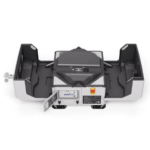
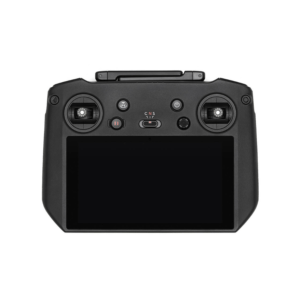
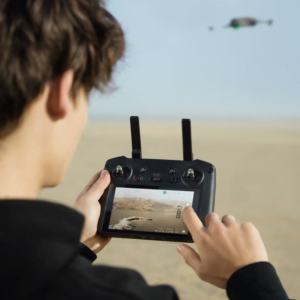
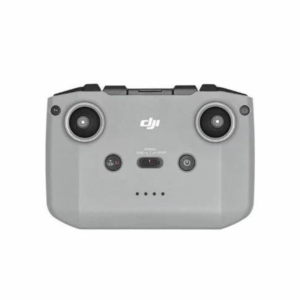
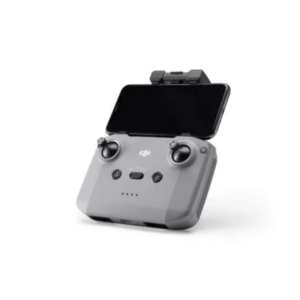
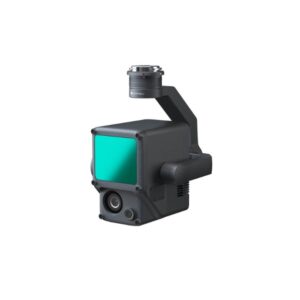
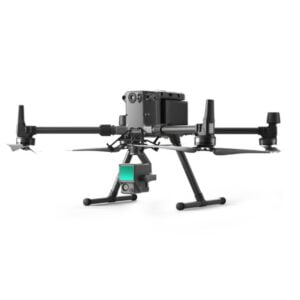
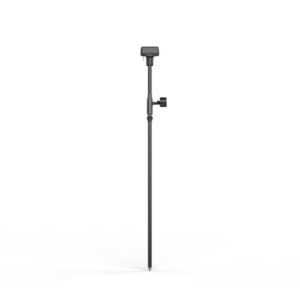
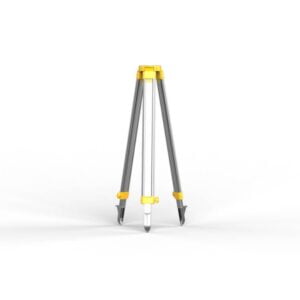

Reviews
There are no reviews yet.